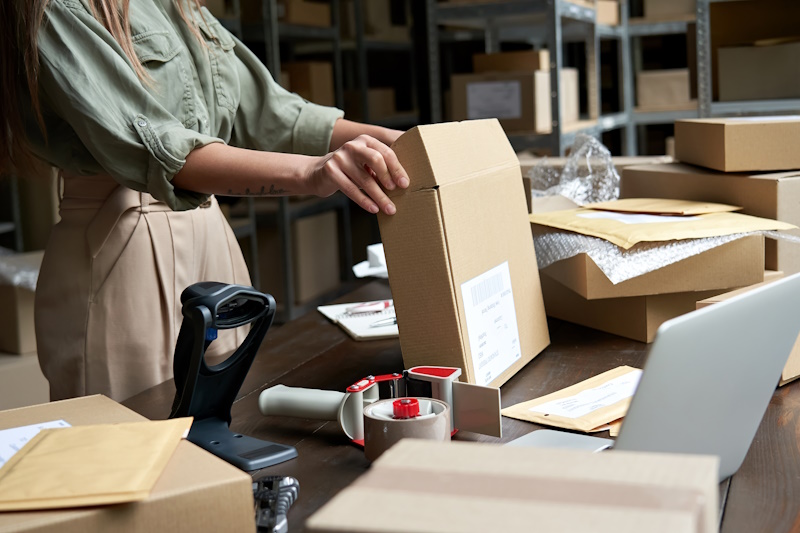
Packaging plays a major role in your business’s shipping success. Well-packed shipments are at a significantly lower risk of damage and contribute to a more positive association with your brand. Poorly-packed shipments have the opposite effect, which can lead to losses in revenue.
To minimize damaged products, customer complaints, and frequent refunds, you must pack items the right way. Read on to learn six of the most common shipment packaging mistakes and how you can avoid them.
A shipping box that’s too large is just as problematic as one that’s too small. You’ll not only be forced to spend more on packing materials to fill any empty space still in the box, but because there’s more room for contents to shift, you increase the chances that items will be broken, scratched, or damaged in another way.
This also applies to other packaging solutions, like bubble wrap. Small-sized bubble wrap cells are typically used for light- to medium-weight objects, while large bubble wrap’s oversized cells work perfectly for general padding and void fill.
The shipping process is not always a kind one, so you should do what you can to keep contents secure. If the products you sell vary in size, that may mean you need to invest in a wider range of packing materials. This will ensure you achieve the perfect fit for every item in your inventory.
You can’t simply top off a shipment with packing peanuts and call it good. Bare-bones packaging is a recipe for disaster during transit and can be culprit of damages. Bubble wrap, foam packaging, kraft paper, newsprint, and other supplies provide the cushioning your products need to arrive at their destination safely.
Keep in mind that packaging isn’t one-size-fits-all. Each of these materials serves a different purpose. If you’re not sure where to start, a reputable packaging retailer will be able to work with you and make recommendations on the right solutions for your needs.
There are two sides to every coin, and just as you can underpack a shipment, you can easily overpack one as well. Using too much packing materials is wasteful and can cause your shipping costs to be higher than necessary. It can also negatively impact your customer experience, as consumers are growing more environmentally conscious.
To keep your business’ reputation and bottom line in check, be intentional with your packaging. Only use what you really need to properly protect your products. If you’re interested in doubling down on reducing waste, opt for eco-friendly packing materials. You can even highlight your green difference in your marketing efforts to give your brand a competitive edge.
Shipping boxes with fragile items are commonly labeled “handle with care,” but they often lack specific instructions on how exactly to handle the package. Give shippers and receivers more direction by using phrases like “keep upright” or “do not stack.”
In more complex cases, you may consider including accompanying documentation that spells out steps for opening the package and handling the product. Packing list envelopes, which adhere to the outside of a shipping box, come in handy for these situations!
The cheapest options are generally the most tempting, but they’re rarely the best packing materials. It’s not just about the way you use the supplies you have; their quality also matters.
Substandard packaging might not be strong enough to withstand some of the impacts of shipping, leaving your products vulnerable to potential hazards like moisture and shock. Although you may pay more up front for first-rate packing materials, you’ll end up saving in the long run. Do your research and find a supplier that balances quality with price.
If you run a smaller shipping operation, you may think shopping for packing materials at your nearest big-box store is the way to go. However, this often results in less product for more money. General retailers also may have a limited selection, meaning you have to search the city to find supplies.
Ordering materials from a packaging distributor or manufacturer allows you to get what you need all in one place. Additionally, these experts tend to carry the best packing materials. Products are held to a higher standard to meet shipping carrier guidelines, but sold at wholesale prices, so you’re not breaking the bank. As your business scales, you can save even more money by buying in bulk quantities.
For more information about selecting the right packing materials, contact a trusted packaging retailer.